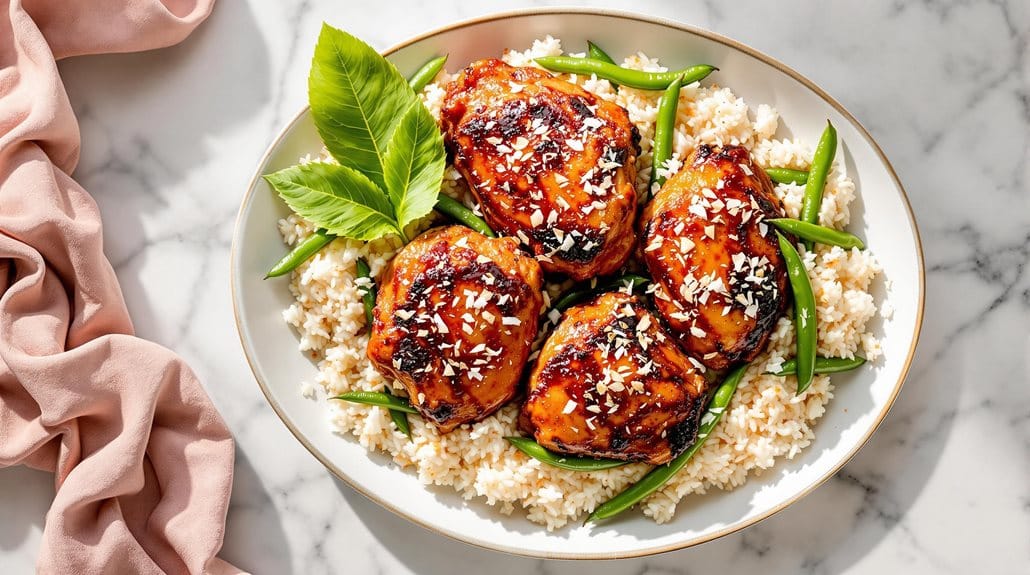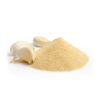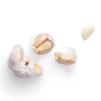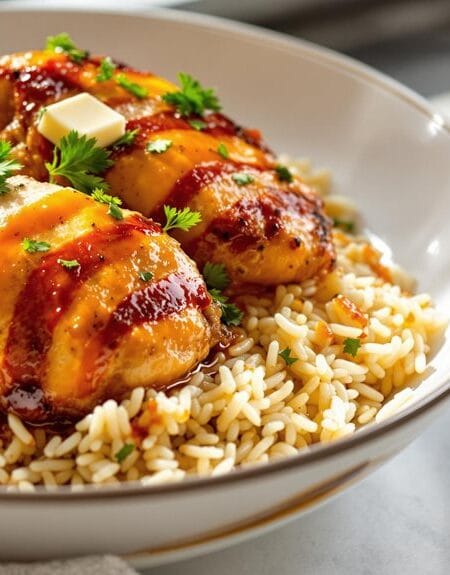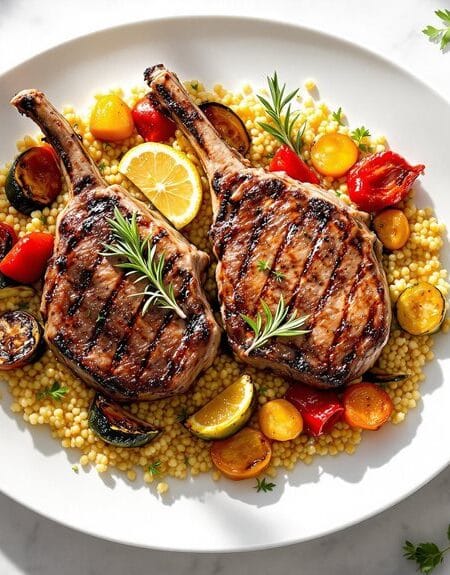You’ll find the vibrant spirit of Spanish tapas bars reimagined in this modern interpretation of spiced chicken with patatas bravas. While traditionalists might raise an eyebrow at using the Ninja Speedi, this contemporary approach captures the essence of Madrid’s most beloved bar snack while simplifying the cooking process. The combination of crispy potatoes and tender chicken, unified by a bold spice profile, transforms a casual weeknight dinner into something more compelling. Whether you’re a seasoned home cook or just beginning to explore Spanish cuisine, there’s an intriguing story behind how this classic dish has evolved to fit today’s busy lifestyle.
Spanish Tapas Bar Origins
You’ll discover patatas bravas and spiced chicken at nearly every tapas bar in Madrid, where this vibrant small-plates tradition began in the late 1800s.
When you visit an authentic Spanish tapas bar, you’re stepping into a time-honoured social tradition that started with tavern owners placing small plates over wine glasses to keep out flies and eventually filling those plates with savoury bites.
The concept has grown from its humble beginnings into today’s lively tapas culture, where you can sample an array of dishes while enjoying the warmth of Spanish hospitality.
Historical Roots in Madrid
Nostalgia runs deep in Madrid’s tapas culture, where patatas bravas first emerged in the 1960s at Casa Perico and La Casona, a beloved neighbourhood bar.
You’ll find that this iconic dish quickly spread throughout the city’s traditional taverns, becoming a staple of Madrid’s culinary identity. The original recipe was simple but revolutionary – crispy fried potatoes topped with a spicy tomato sauce that gave the dish its name “bravas,” meaning “fierce” in Spanish.
As you explore Madrid’s food history, you’ll discover that the dish evolved from the city’s working-class roots. In the post-war period, potatoes were an affordable, filling option that could be transformed into something special with just a few ingredients.
The combination of golden-fried potatoes and that signature sauce became so popular that you couldn’t find a tapas bar without it.
Today, while you’ll encounter countless variations across Spain, true Madrid locals will tell you that the authentic bravas sauce should be more orange than red, with a kick that’s noticeable but won’t overwhelm your palate.
It’s a demonstration of how simple ingredients can create something truly memorable.
Authentic Spanish Bar Experience
The authentic Spanish tapas bar experience extends far beyond just patatas bravas, reaching back to 19th-century Andalusia.
You’ll find these lively establishments packed with locals standing at the bar, sharing small plates and engaging in animated conversations. It’s a social ritual that’s deeply woven into Spanish culture, where you’ll never drink without eating something alongside.
In a traditional tapas bar, you’ll notice plates of olives, jamón, and tortilla española scattered across the bar top. The patatas bravas arrive piping hot, served in small earthenware dishes called cazuelas, alongside other classics like chorizo al vino and gambas al ajillo.
You won’t find fancy tablecloths or reserved seating – it’s all about the casual, drop-in atmosphere that encourages socialising with friends and strangers alike.
What makes these bars truly special isn’t just the food – it’s the entire experience. You’ll hear the constant clinking of glasses, the rapid-fire Spanish conversations, and the occasional shout of “¡otra ronda!” (another round!).
The servers navigate the crowd with practiced ease, somehow keeping track of everyone’s tab while maintaining the warm, inviting atmosphere that’s quintessentially Spanish.
Small Plates Culture Evolution
While modern tapas bars have evolved into sophisticated dining destinations, their humble origins trace back to simple Spanish taverns where innkeepers would serve small portions of food to cover wine glasses, preventing dust and insects from spoiling the drink.
You’ll find that the word “tapa” actually means “lid” or “cover” in Spanish, referring to these practical food covers that eventually became a cherished dining tradition.
As you explore today’s tapas culture, you’ll notice it’s grown far beyond its practical roots.
What started as simple slices of bread and cheese has transformed into an elaborate dining style that’s spread globally.
You’re now likely to find creative small plates in restaurants worldwide, from New York to Tokyo.
The concept has inspired countless variations, including Mediterranean mezze and Chinese dim sum-style service.
Even traditional American restaurants have jumped on board, offering “shareable plates” that capture the social spirit of Spanish tapas.
This evolution hasn’t just changed how we eat; it’s transformed how we socialise around food, making dining a more interactive and communal experience.

Spiced Chicken With Patatas Bravas in Ninja Speedi
Description
This vibrant dish combines tender, aromatic chicken with Spain's beloved patatas bravas - crispy potatoes topped with a smoky, spicy sauce.
Using the Ninja Speedi's dual-cooking capability, you can create this restaurant-quality meal efficiently at home.
The beauty of this recipe lies in its simultaneous cooking method, where the chicken steams to perfection below while the potatoes develop a golden crust above, all infused with Mediterranean spices.
Ingredients
For the Bravas Sauce:
Instructions
Bottom Pot:
- Mix paprika, cumin, garlic powder, oregano, salt, and pepper in a bowl.
- Coat chicken thighs with 1 tablespoon olive oil and half the spice mixture.
- Pour chicken stock into the bottom pot.
- Place seasoned chicken thighs in the bottom pot.
Crisping Tray:
- Toss potato cubes with remaining olive oil and spice mixture.
- Spread potatoes evenly on the crisping tray.
- Stack tray above the chicken.
Cooking:
- Select Speedi Meals function.
- Set temperature to 200°C/390°F.
Cook for 20 minutes. Turn the Potatoes over a couple of times while cooking.
- While cooking, mix bravas sauce ingredients in a small bowl.
When finished, pour the stock away and serve the Chicken and Potatoes with the sauce drizzled over the top with vegetables of your choice.
Nutrition Facts
Servings 4
- Amount Per Serving
- Calories 804.06kcal
- % Daily Value *
- Total Fat 54.32g84%
- Saturated Fat 12.01g61%
- Trans Fat 0.16g
- Cholesterol 195.91mg66%
- Sodium 905.93mg38%
- Potassium 1393.21mg40%
- Total Carbohydrate 41.06g14%
- Dietary Fiber 5.4g22%
- Sugars 2.84g
- Protein 37.87g76%
- Vitamin A 88.68 IU
- Vitamin C 41.18 mg
- Calcium 62.78 mg
- Iron 4.15 mg
- Vitamin D 0.19 IU
- Vitamin E 2.57 IU
- Vitamin K 18.24 mcg
- Thiamin 0.34 mg
- Riboflavin 0.41 mg
- Niacin 11.97 mg
- Vitamin B6 1.4 mg
- Folate 41.04 mcg
- Vitamin B12 1.19 mcg
- Phosphorus 449.68 mg
- Magnesium 92.01 mg
- Zinc 3.35 mg
* Percent Daily Values are based on a 2,000 calorie diet. Your daily value may be higher or lower depending on your calorie needs.
Note
Extra Tips:
For extra crispy potatoes, shake the crisping tray halfway through cooking.
If the chicken skin isn't crispy enough after cooking, remove the potatoes and broil the chicken for 2-3 minutes.
The bravas sauce can be made spicier by adding cayenne pepper to taste.
For best results, verify potatoes are cut uniformly for even cooking.





